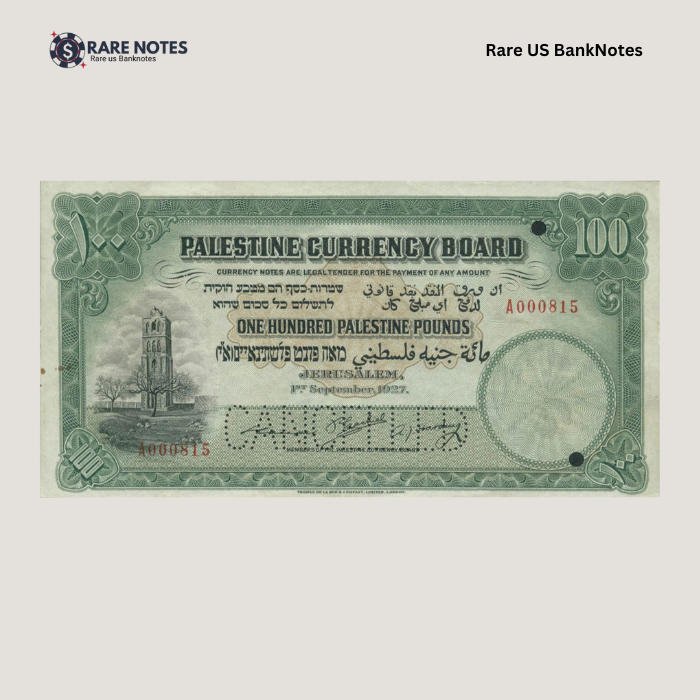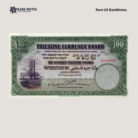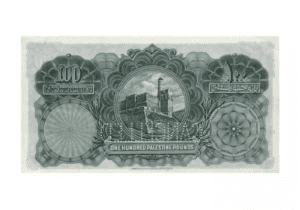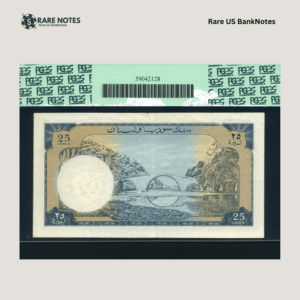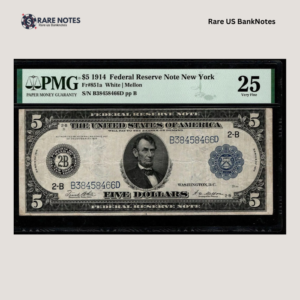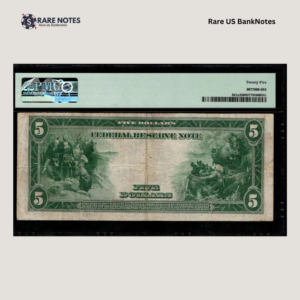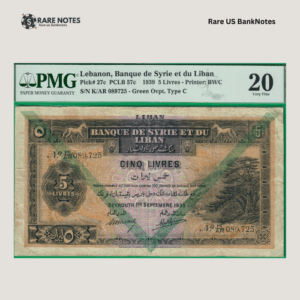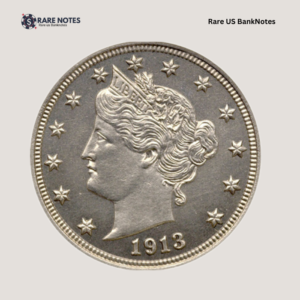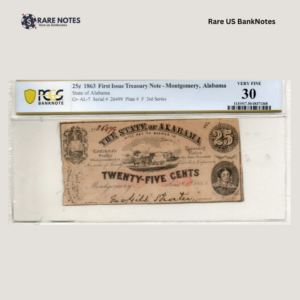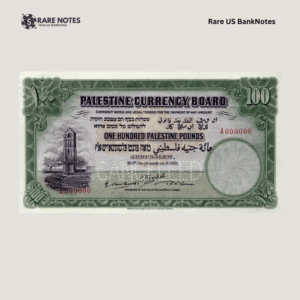100 Palestine Pounds Banknote – Palestine Currency Board
🔹 Issuer: Palestine Currency Board (British Mandate of Palestine)
🔹 Tag phrase: 100 Palestine Pounds Banknote – Palestine Currency Board
🔹 Denomination: 100 Palestine Pounds
🔹 Pick Number: Varies (Exact reference upon request)
🔹 Condition: Ungraded or Certified (Contact for details on grading availability)
🔹 Historical Significance: A high-denomination note used during British administration
🔹 Scarcity: Among the rarest Palestine banknotes, highly sought after by collectors worldwide
- Estimated Delivery : Up to 4 business days
- Free Shipping & Returns : On all orders over $200
100 Palestine Pounds Banknote – Palestine Currency Board | Rare Historical Note | British Mandate Era
The 100 Palestine Pounds banknote issued by the Palestine Currency Board is one of the rarest and most historically significant pieces of currency from the British Mandate era (1927–1948). As one of the highest denominations issued under British rule in Palestine, this banknote was rarely used in daily transactions, making surviving specimens exceptionally rare. Collectors, historians, and investors alike regard this banknote as one of the most sought-after pieces of Middle Eastern numismatic history.
The 100 Palestine Pounds note represents an era of profound political, economic, and social transformation in the region, preceding the establishment of Israel in 1948. Following the end of the British Mandate, these notes were demonetized and withdrawn from circulation, significantly reducing their availability and increasing their value in today’s numismatic market.
For those interested in British colonial currency, Middle Eastern history, or high-value rare banknotes, the 100 Palestine Pounds banknote is a must-have investment.
Historical Significance of the 100 Palestine Pounds Banknote
During the British Mandate of Palestine (1920–1948), the Palestine Currency Board (PCB) was responsible for issuing and regulating currency. Established in 1926 under British authority, the PCB introduced a series of banknotes and coins starting in 1927, which remained in circulation until the British withdrew from Palestine in May 1948.
The 100 Palestine Pounds banknote was the highest denomination in this series, primarily used for large financial transactions, banking reserves, and government-related payments. Due to its high value, the note was not widely circulated among the general public, making original surviving specimens extremely scarce and valuable today.
After the end of the British Mandate and the creation of the State of Israel, all Palestine Currency Board notes were officially demonetized and replaced by the Israeli Lira (Pound), further contributing to their rarity.
Design and Features of the 100 Palestine Pounds Banknote
Obverse (Front Design)
- Deep brown color scheme, unique among the Palestine Currency Board banknotes.
- Features the issuing authority, “Palestine Currency Board”, in English, Arabic, and Hebrew, symbolizing the region’s diverse population.
- Displays the large denomination “100 Palestine Pounds” prominently in all three languages.
- The official signature of the Financial Secretary, signifying British control over the region’s monetary policy.
Reverse (Back Design)
- Showcases a detailed illustration of the Dome of the Rock in Jerusalem, one of the most significant landmarks in the region.
- Features intricate guilloche patterns, a security feature designed to prevent counterfeiting.
- Maintains the multilingual inscriptions in English, Arabic, and Hebrew, reinforcing its usage across different communities.
Why the 100 Palestine Pounds Banknote is a Highly Valuable Collectible
1. Rarity and Limited Survivability
- As the highest-denomination Palestine Currency Board note, the 100 Palestine Pounds note was rarely used, meaning very few were printed.
- Most were held in bank reserves rather than circulated, making them exceptionally rare in today’s market.
- Many surviving specimens were either lost or destroyed following the end of the Mandate, further increasing their scarcity.
2. Strong Collector and Investor Demand
- Due to its historical and political significance, this note is one of the most highly sought-after Middle Eastern banknotes.
- Collectors specializing in British colonial currency, pre-Israeli banknotes, and rare world currency seek this banknote for its historical value and investment potential.
3. Increasing Value Over Time
- The 100 Palestine Pounds note has consistently appreciated, making it an excellent long-term investment.
- With a limited number of authentic notes available in private collections, auctions, and museums, its rarity continues to drive demand.
- As geopolitical interest in Palestine’s history grows, this note remains an important financial artifact.
4. Historic and Cultural Significance
- The note was issued during a critical period of Middle Eastern history, shortly before the dissolution of the British Mandate and the establishment of Israel.
- The Dome of the Rock illustration on the back highlights Palestine’s deep cultural and religious heritage, making it a significant artifact beyond just its monetary value.
- The use of English, Arabic, and Hebrew text reflects the political and demographic complexity of the British Mandate era.
How to Preserve and Display the 100 Palestine Pounds Banknote
Due to its rarity and high market value, it is essential to properly store and protect this 100 Palestine Pounds banknote:
✔ Store in a protective PMG-graded holder to prevent damage from handling, dust, and moisture.
✔ Avoid exposure to direct sunlight to prevent fading of ink and colors.
✔ Consider professional authentication and grading to enhance its resale value and ensure authenticity.
✔ Display in a climate-controlled environment to prevent deterioration of paper quality over time.
Owning this rare historical banknote not only offers a connection to the past but also represents a strong investment opportunity as prices continue to rise.
Conclusion
The 100 Palestine Pounds banknote issued by the Palestine Currency Board during the British Mandate era is an exceptionally rare and valuable piece of numismatic history. As the highest-denomination note in the series, it was seldom used in circulation, making surviving specimens exceedingly scarce and highly desirable among collectors and investors.
With its rich historical significance, limited availability, and increasing market value, this banknote is an essential addition to any serious collection of Middle Eastern, British colonial, or rare world currency.
Don’t miss your opportunity to own a piece of history – acquire the rare and prestigious 100 Palestine Pounds banknote today!
 The Store Opens Today 09 Am - 6 Pm
The Store Opens Today 09 Am - 6 Pm


